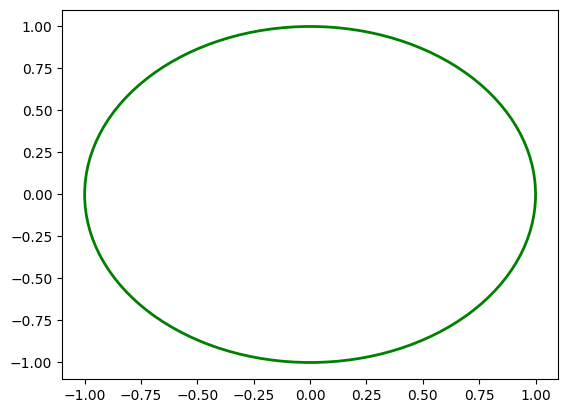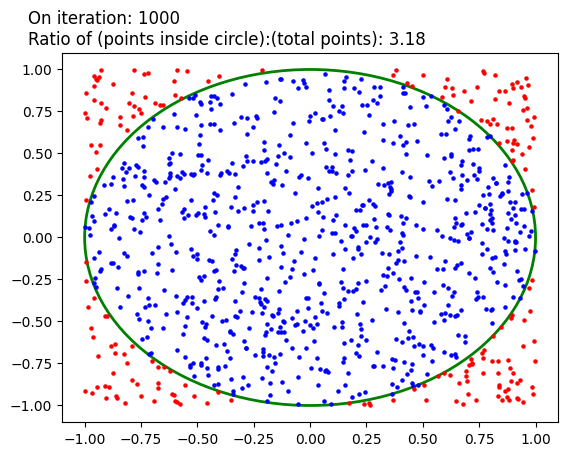📝 Monte Carlo in a Circle ◯#
Is anything particularly interesting visualized if we randomly distribute points in a 2 dimensional, -1 by 1 grid on which is plotted a circle of radius 1 centered at (0,0)?
Monte Carlo simulations are a class of computational algorithms that rely on repeated random sampling to obtain numerical results. They are often used to model phenomena with significant uncertainty in inputs, such as the calculation of risk in business or the simulation of physical and mathematical systems. The basic idea is to use random numbers to simulate the behavior of a complex system, and then use the results to make predictions about the system’s behavior.
Import required packages#
We will need packages to handle stats and visualization.
from IPython.display import display, clear_output
import matplotlib.pyplot as plt
import numpy as np
import random
import math
import time
Plot Circle#
Plot a circle of radius 1, centered at (0,0)
#Initialize plot
fig, ax = plt.subplots()
#Set limits of visualization
ax.set_xlim(-1.1, 1.1)
ax.set_ylim(-1.1, 1.1)
#Place circle on plot
circle = plt.Circle((0, 0), 1, fill=False, color='green', linewidth=2)
ax.add_artist(circle)
<matplotlib.patches.Circle at 0x7f93f5466e50>

Generate Data#
#Initialize variables
num_samples = 1000
points_inside_circle = 0
x_data, y_data = [], []
#Loop through desired sample to generate values for x and y based on uniform distribution
for i in range(num_samples):
x = random.uniform(-1, 1)
y = random.uniform(-1, 1)
x_data.append(x)
y_data.append(y)
distance = math.sqrt(x**2 + y**2)
if distance <= 1:
points_inside_circle += 1
Plot data#
What is the ratio of points inside the circle vs. total points?
#Initialize plots for data inside circle and outside circle with different colors
inside_scat = ax.scatter([], [], color='blue', s=5)
outside_scat = ax.scatter([], [], color='red', s=5)
#Initialize variables to be populated with data for points inside vs outside circle
inside_x, inside_y = [], []
outside_x, outside_y = [], []
points_inside = 0
#Initialize text location
info_text = ax.text(-1.25, 1.15, "", fontsize=12, color="black")
#Loop through samples to populate inside/outside x and y points
for i in range(num_samples):
#if a point is inside the circle, add it the appropriate list
if (x_data[i])**2 + (y_data[i])**2 <= 1:
inside_x.append(x_data[i])
inside_y.append(y_data[i])
points_inside += 1
#otherwise, add it to the other list
else:
outside_x.append(x_data[i])
outside_y.append(y_data[i])
#combine and formatt both sets of data
offsets_in = np.array(list(zip(inside_x, inside_y)))
offsets_out = np.array(list(zip(outside_x, outside_y)))
#make sure that both sets of data are the correct shape, even if they are empty
if offsets_in.ndim != 2:
offsets_in = np.empty((0, 2))
if offsets_out.ndim != 2:
offsets_out = np.empty((0, 2))
#add data to figure
inside_scat.set_offsets(offsets_in)
outside_scat.set_offsets(offsets_out)
total_points = len(inside_x) + len(outside_x)
if total_points > 0:
ratio_current = 4 * (len(inside_x) / total_points)
else:
ratio_current = 0.0
info_text.set_text(
f"On iteration: {i+1}\n"
f"Ratio of (points inside circle):(total points): {ratio_current:.2f}"
)
#animate addition of new points
clear_output(wait=True)
display(fig)
time.sleep(0.001)


